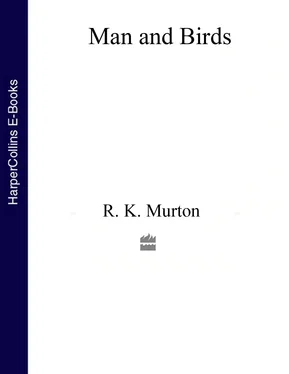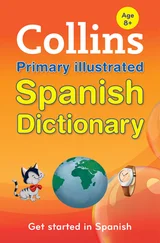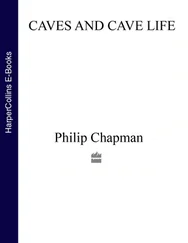The era of the country house dawned in the sixteenth century and ornamental estates and parks blossomed in the seventeenth, and it became increasingly fashionable to keep ornamental birds. Aviculture was not new, the Romans having long before indulged their love of keeping exotic animals in captivity, one result being the introduction of the pheasant Phasianus colchicus to Britain. Increasing travel and interest in science led in turn to more attention being paid to wild life. Charles II had his pelicans and other birds in St. James’s Park, and the climate of opinion in which he founded the Royal Society was appropriate to experimental science, and led to the introduction of various exotic plants and animals, including the red-legged partridge (unsuccessful introduction attempted in 1673) and Canada goose. The rise of the squirearchy was also marked by the appearance of various game laws in the Restoration period, forcing the farmers and yeomen to make unpopular sacrifices in order that the squire could shoot, just as the King by means of the forest laws had supplanted all classes in preceding ages. The cross-bow, firing metal bolts, had been the important weapon until this time; but now the shot-gun replaced hawking as the gentleman’s means of relaxation. It became more common during Charles II’s reign, though not without much controversy, to shoot pheasants in flight instead of simply stalking perched birds or walking them up with dogs. Birds were caught for food with cross-bow, lime, snares, traps and nets, and nets were even used in sport. With the development of the shot-gun, it was gradually agreed that only certain species should be recognised as suitable for sport and be classified as game, and grouse and black cock were allotted to this category. The breech loading gun brought more controversy, just as double-barrelled guns and American repeaters were to do later, but it meant that birds could be driven over the guns and grouse shooting could emerge in about 1855, ensuring that from then on the nation’s parliamentary business finished in time for the glorious 12th August. Actually in 1915, a bill was passed in the Lords authorising the shooting of grouse on 5th August, so that those for whom the war gave less spare time could be ensured their full share of enjoyment. It is to the credit of the Commons that they rejected the bill, amidst shouts of ‘we want to shoot Germans not grouse’. So much have the priorities of men and birds become confused.
The arbitrary rules which grew up in connection with shooting are of interest and importance because they still govern much of our present-day approach to pest control. I have a good friend with a lifetime’s experience of both country sporting traditions and of pest control who was appalled at the suggestion that pigeons should be shot when sitting on their nests. He preferred to flush the bird first before shooting, in order to give it a sporting chance, despite the fact that my suggestion would give much greater prospects of a quick and humane kill. Game preservation and shooting have brought out some of man’s worst attitudes to wild life. In the early days of the big country estates, poachers and gamekeepers were often engaged in open warfare; if hideous traps could be set for vermin it presumably seemed logical for man-traps to be set for poachers. Those days left a legacy of slyness, suspicion and conservatism which has been slow to disappear. The nineteenth century witnessed the worst excesses, with the ruthless slaughter of any predatory bird or mammal, and nothing was allowed to stand in the way of prodigious bags. William Cobbett in Rural Rides (1830) was contemptuous of these so-called sportsmen – especially those who claimed big bags. ‘A professed shot is almost always a disagreeable brother sportsman. He must have in the first place a head rather of the emptiest to pride himself upon so poor a talent.’ In 1903 the Game Rearers Annual stated: ‘The hooded crows are most difficult to destroy and unless poison is used (which, by the way, is illegal) they cannot be successfully coped with. Where poison is used it is generally placed in the eyes of a dead sheep, which usually provides a fatal lure to the hoodies.’ So much for the early Bird Protection Laws. Even today it is proving a slow uphill struggle to educate the more recalcitrant gamekeepers into accepting that such actions do not automatically improve game prospects, but there has been much progress.
Increasing demands for shooting at first led to the augmentation of pheasant stocks by hand rearing, a technique which has grown enormously in the last fifty years owing to a break up of large estates, and to the formation of shooting syndicates and the attraction of city business men, helped by improvements in transport and more leisure. This in turn has led to the scientific study of game-birds and the elevation of game biology to a highly respected place in the wider field of wild life conservation and management, and was heralded by the grouse inquiry (Lovat 1911) already mentioned in the preface. Following the growth of ecology, the Imperial Chemical Industries, Game Research Station (later Eley Game Advisory Station) was formed in 1933. Its ultimate aim was of course to improve prospects for selling cartridges, but under the direction of A. D. Middleton (himself a vital force in the growth of ecology at Oxford) it has set the standards for field ecology in a much wider sense, and made possible the formation of the progressive Game Research Association in 1960, which has subsequently become the Game Conservancy since 1969. In the meantime, the study of grouse was recommenced when the Nature Conservancy inaugurated its Unit of Grouse and Moorland Ecology in 1959 at Aberdeen University. One hopes that the study and amenity of game will become even more integrated within the broader concepts of wild life management in Britain.
But we have moved on too far in time if we are to appreciate what man has done to the land as a habitat for birds. The rate of tree felling increased as the Tudor squires enclosed waste, common and woods, a process that accelerated after 1660 when the Government relinquished its opposition to private agreements negotiated by the landlords. All the same the pattern of the countryside as we see it today had only emerged in south-east England. Even by the eighteenth century there was abundant wilderness, about a quarter of the country being heath and moor, and much of the remainder was medieval with open fields of meadow and arable land adjoining gorse-covered common pasture; by 1760 less than a quarter million acres had been enclosed. One can picture the goose-girl tending her flock idly watching the goldfinches on thistle clumps or stonechats singing from some furze. Bustards were still stalking the chalk wolds of eastern England, white-tailed eagles were nesting on the Isle of Wight.
The big rural transformation came between 1750 and the General Enclosure Act of 1845, most of the open fields going in the sixty years of Farmer George III. Most of the earlier enclosures had been of common, waste and woodland, expensive to achieve but less disturbing for the community in that the old peasant system could still be based on self-sufficiency. The enclosures of the eighteenth and nineteenth centuries were based on economic necessity and were a national policy that brought much suffering and ill-will. In less than a century, they transformed peasant England into modern England. There were many protagonists. Pioneers of modern farming like Arthur Young, who did much to disseminate the latest results of experiments and supported all the agencies like farmers’ clubs, ploughing matches and sparrow clubs which helped to diffuse ideas, claimed that enclosure brought more employment in fence mending and turnip husbandry, even though sheep were lost. Young was enthusiastic but he was inflexible and lacked judgement and others were less enchanted:
Читать дальше












